Miguel Llansó’s trash aesthetic
I neglected to note two weeks ago that this blog has reached its 10th anniversary. I launched it on October 22, 2010, with a brief comment about a digital screening of Alfred Hitchcock’s Psycho at the local multiplex, and have posted at least once a week for the ensuing ten years. That 10th anniversary post was also my seven-hundredth. I had no idea at the start that it would become such a fixed and constant part of my life, or that I’d feel some anxiety whenever circumstances looked as if they might interfere with my self-imposed deadline every Wednesday.
In some ways, writing so consistently about the movies I see has made me a more attentive viewer; it has also, perhaps, shaped what I choose to watch … although that’s impossible to quantify. It has brought me some interesting contacts in the form of comments and emails from people I would otherwise never have had any connection with – particularly gratifying are responses from filmmakers who have read, and sometimes appreciated, what I’ve written about their work.
And so, I’ll keep going, sometimes struggling, sometimes inspired, offering thoughts and responses to the movies I see … as my mother would have told me when I was young, the writing is its own reward and any echoes that come back are icing on the cake.
*
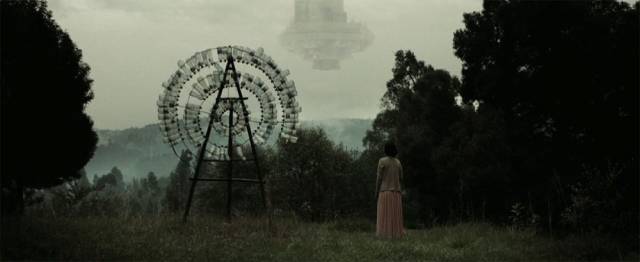
It’s always exhilarating to discover the work of a previously unknown filmmaker which resonates with you on multiple levels. A few years ago I had that experience when Arrow released Justin Benson and Aaron Moorehead’s The Endless (2017) and Resolution (2012). Now Arrow has done it again with a new two-disk Blu-ray release of the features of Miguel Llansó, both so packed with ideas and references that they practically insist on multiple viewings.
Llansó, born in Madrid, studied philosophy and cinema and ended up in Ethiopia where he began making movies in 2010. His travels add a strange feeling of dislocation to his films, along with a sense of discovery – his first feature, Crumbs (2015), offers a dizzying array of unfamiliar landscapes, all shot in Ethiopia, while the second feature, Jesus Shows You the Way to the Highway (2019), adds other layers by being a Spanish-Ethiopian-Estonian co-production shot in four countries, which breaks down the very idea of national boundaries and identities.
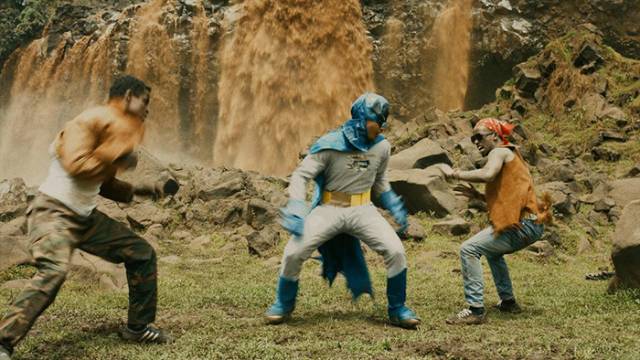
This accumulation of places runs parallel to Llansó’s scavenging of the cultural detritus of late 20th Century/early 21st Century colonial and Capitalist societies, investing pop-culture trash with new, even mythological, meanings which expose the bankrupt politics propping up the current dysfunctional world order. But if that sounds terribly heavy and theoretical, the films themselves have a light and playful touch and a genuine emotional resonance which emanates from a focus on characters just trying to live their lives in the midst of this chaotic mess.
*
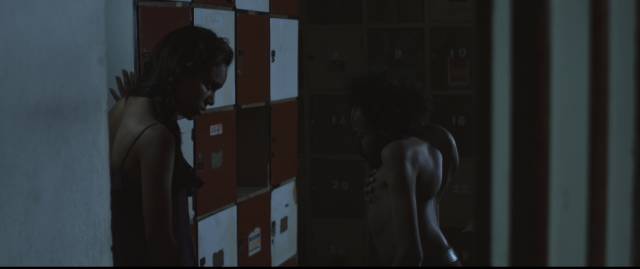
Crumbs (2015)
Llansó’s first, short feature (68 minutes) is a quest narrative set in a post-apocalyptic world long after a catastrophic war. Candy (Daniel Tadesse) lives with his fiancee Sayat, whom he calls Birdy (Selam Tesfayie), in a derelict bowling alley surrounded by verdant woods and meadows. He goes out into a wasteland to scavenge for items in the ruins while she creates art by transforming scrap metal into sculptures (echoes of Richard Stanley’s Hardware, though without the more overt genre trappings). The detritus of this post-war world is thus invested with new meanings – a theme expanded on in a series of scenes in which people bring various mass-produced toys and objects to a trader who expounds on their origins in a mythical pre-war age before beating the sellers down on the price. These include a Teenage Mutant Ninja Turtles figurine, a toy plastic sword, a Michael Jackson vinyl LP…
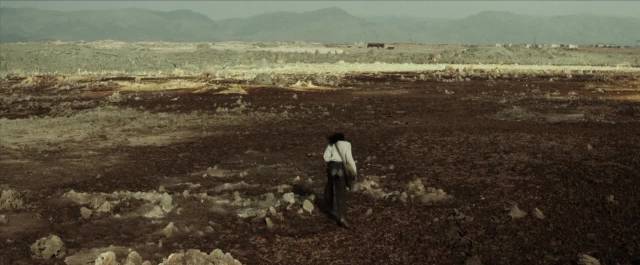
Above this world hangs a stationary spaceship whose provenance is unknown, but which Candy believes is the craft which brought him from another world and which is destined to take him, Sayat and their coming child back to his home planet, where their son will be crowned king. Strange things are beginning to happen – the bowling alley machinery abruptly powers up of its own volition; a voice can be heard emanating from one of the ball-return chutes – and Sayat believes it’s because the alien spaceship is being reactivated.
Candy decides to go and visit “the Witch” to find out what’s happening and he sets out on a journey across strange landscapes where he encounters a number of strange people. Sayat gives him the toy sword (still in its original packaging) for protection – made by Carrefour, she tells him, “the last total artist” – but before he’s gone far a horseman wearing a Power Rangers mask grabs it from him, eventually taking it to the trader where he’s cheated out of a fair price for the valuable artefact. In fact, each object brought to the trader is something either lost by Candy or stolen from him.
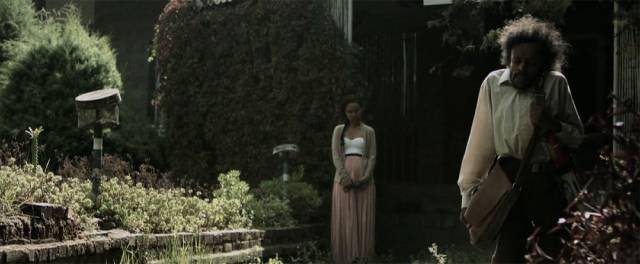
The witch (Shitaye Abraha) tells Candy that he must travel to the city to find what he’s looking for and he follows derelict railway lines and finally arrives by a lake where Santa Claus lives in ancient ruins – and turns out to be the source of the voice heard from the chute in the bowling alley with whom Sayat has been conversing during Candy’s absence. This is one cranky, cryptic Santa, who refuses to grant Candy’s wish (to return to his home planet in the spaceship – Candy reveals a Superman undershirt as proof of his true identity), but instead insists on strict adherence to protocol; Candy must write his list of wishes down and mail them, with Santa’s helper having to put the official stamp on them before they can be processed.
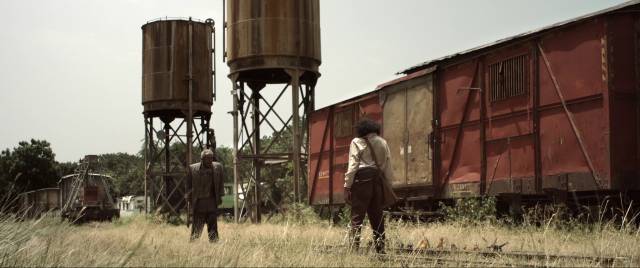
When Candy balks, insisting that since he’s here he should be able to ask in person, Santa attacks him, restrained from killing him only by the voice of Sayat pleading from the bowling alley. With his wish not granted, Candy leaves and finds himself in an old movie theatre where a cheesy Turkish Superman knock-off is playing on screen. The ancient protectionist tells him it’s been playing for decades and says he recalls Candy coming to see it as a child before his father sent him away because of the war.
Given this alternate story of his own origins, Candy throws away the Superman shirt and in a dreamlike conclusion rejoins Sayat to await the birth of their child as the spaceship leaves Earth orbit.
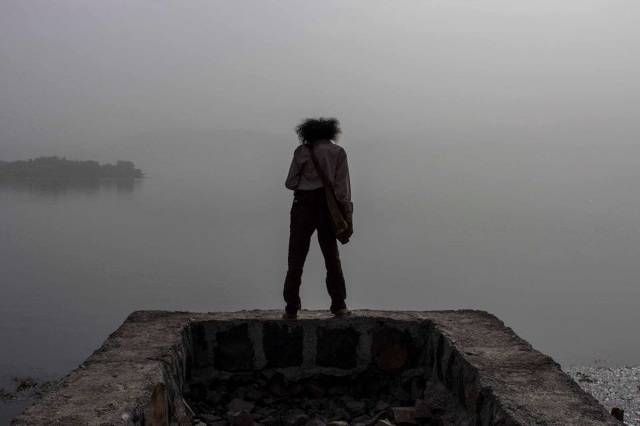
The richness of Crumbs comes not only from the way in which Llansó weaves the disposable artefacts of a commercially-driven pop culture into a mythology which helps these survivors sustain a sense of meaning in a devastated world, but also from the performances which give the characters emotional depth despite the absurdity of the context within which they exist. Daniel Tadesse is crucial here, a dwarf with severely deformed bones, he has a remarkable screen presence and charisma which make him a convincing romantic hero no matter how much his physical appearance runs counter to accepted norms. The romance between Candy and Sayat is a touching refutation of the apocalyptic end-of-mankind setting.
In this, Crumbs seems a more positive and hopeful vision of the end of the world than the film it most reminded me of – Jim McBride’s Glen and Randa (1971), another post-apocalyptic quest narrative in which pop culture debris in invested with mythical meaning as the benumbed survivors of a devastating war go in search of Metropolis, the fabled city populated by superheroes. Candy and Sayat, though, retain a genuine emotional connection which refuses to be erased by the end of the world.
*
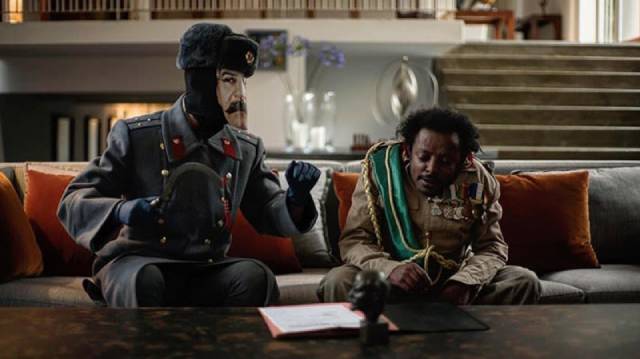
in Miguel Llansó’s Jesus Shows You the Way to the Highway (2019)
Jesus Shows You the Way to the Highway (2019)
Despite the ragged assortment of elements gathered together in Crumbs, the film is visually elegant, with Israel Seoane’s widescreen cinematography providing spectacular images of the varied landscapes and sensitive close-ups of the cast’s expressive faces. Llansó’s approach in his second feature, Jesus Shows You the Way to the Highway (2019), is very different. Here the scavenging extends beyond the set dressing and cultural references to the film’s style itself. He pushes things to extremes by drawing on multiple genres, incorporating low-budget sci-fi, kung fu, European knock-offs of James Bond, cheap superhero wannabes and even Mexican lucha libre adventures among others. And yet, even with three cinematographers shooting in different formats (the film frequently shifts from 1.85:1 to 1.33:1, from celluloid to digital, and back), Llansó holds it together conceptually as he mocks so many genres while constructing a coherent narrative about abuses of power and the impact such abuses have on those who toil at the lower levels of a corrupt system.
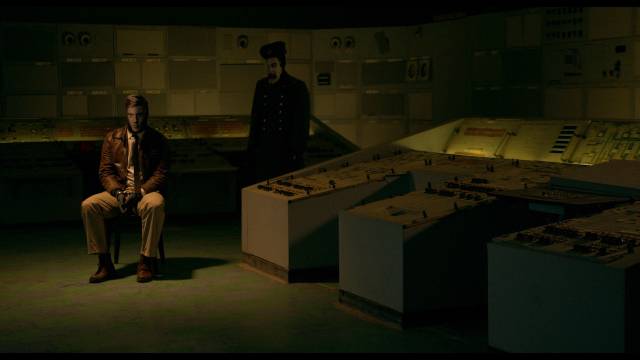
Agent D.T. Gagano (Daniel Tadesse again) and his partner Agent Palmer Eldritch (Agastin Mateo) – whose name signals one of the film’s major influences, the work of Philip K. Dick – are sent by their CIA controllers into a virtual world called the Psychobook, which runs the city of Tallinn, to combat a virus named the Soviet Union, whose avatar is Stalin. Inside that world, everyone’s face is a two-dimensional mask of some famous person. Eldritch has Robert Redford’s face, while Gagano’s is a perpetually startled Richard Pryor. Everyone there moves with a pixilated jerkiness like an old 8-bit video game, as if the computer they’re in doesn’t have quite enough power to render them smoothly.
The world Gagano finds himself trapped in after his body in the “real world” goes into a coma has multiple levels within which various factions – the Soviet Union virus, the dictator Batfro (Solomon Tashe, dressed in a shabby luchador replication of Adam West’s Batman costume) and his rivals for control of Beta-Ethiopia, and Eldritch himself who is dealing in an illicit hallucinogenic substance – vie for political and economic power. Gagano is targeted for assassination because he poses a threat to everyone’s plans, although all he wants to do is quit his job and pursue his personal dreams along with his buxom wife, Malin (Gerda-Annette Allikas) – he to open a pizza restaurant, she to start a kick-boxing school…
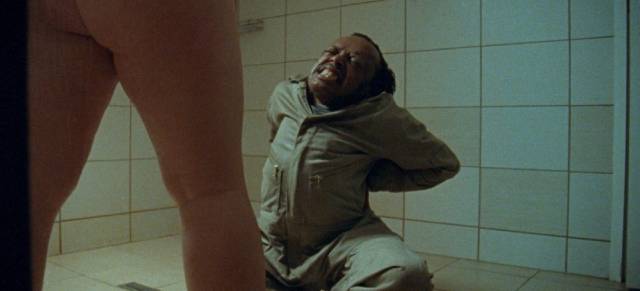
Llansó’s mash-up of tropes from the lowest levels of pop-culture destroys distinctions, creating a transnational space in which identities become unstable and infinitely malleable (at one point the virus sits behind a desk on which an array of optional faces is available to him, Stalin interchangeable with George H.W. Bush, Karl Marx, Osama bin Laden and Tom Cruise among others). Apart from the comic effect of scraping the bottom of the cinematic barrel and blending so many disreputable elements together, Llansó manages to bake them into a sophisticated critique of the way crass commercialism is used by dominant corporate capitalism to embed and extend its hold on the way those who live under its influence perceive the world. On its surface a playful grade-Z entertainment, Jesus Shows You the Way to the Highway embodies a trenchant analysis of oppression and exploitation within its visual and narrative fabric.
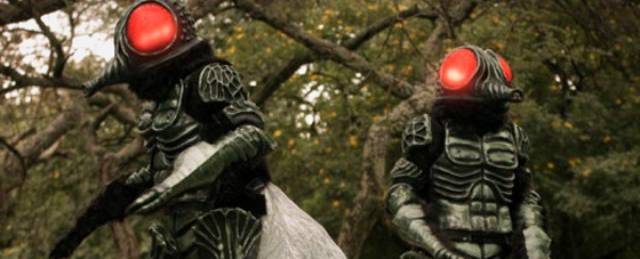
As in the Philip K. Dick novels and stories which influenced the film, particularly The Three Stigmata of Palmer Eldritch (1965) and Ubik (1969), Llansó’s film undermines any sense of certainty about the world(s) in which the characters live as they slip from one plane to another, so that even at the end as they seem to emerge into “reality”, we can’t trust appearances – doubt is unavoidable because the very fact that Gagano and Malin appear to have come within reach of their modest dreams seems implausible; the ending may just be another layer of illusion. The use of multiple locations in different countries – Ethiopia, Spain, Estonia and Latvia – adds to the sense of a constructed reality, breaking down ideas of national identity just as the narrative complicates issues of personal identity.
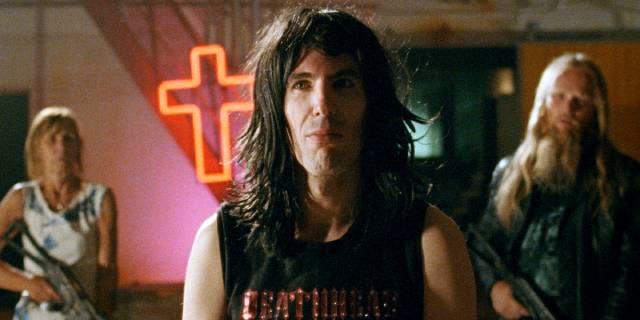
Jesus Shows You the Way to the Highway, profligate in both conception and execution, is steeped in references not only to Philip K. Dick but also to numerous disreputable cinematic styles and genres, all amplified by the careful dubbing which, although it generally appears to be in sync with the actors’ lips, is nonetheless slightly disconnected, evoking everything from those Eurospy movies to spaghetti westerns to Asian action films. But even as this all calls to mind memories of our ill-spent cinematic youth, Llansó holds it together as a coherent narrative with genuine dramatic stakes. As in Crumbs, Gagano’s relationship with Malin is emotionally resonant and erotic, his physical state a direct rebuke to the idea of what makes a romantic hero. His betrayal by his partner and his bosses and his struggle to return to his real life give the chaotic swirl of pop culture signifiers a sense of meaning and direction.
*
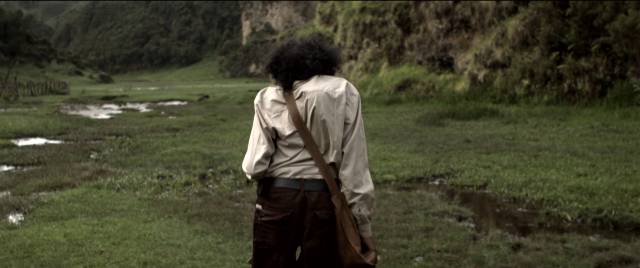
On first encounter, the work of Miguel Llansó – these two features and a couple of shorts also included in the set – has produced a sense of excitement which (no doubt due to my particular viewing habits) remains all too rare. Films like these are a rebuke to complacency, of a tendency to settle for the comfortable and familiar, yet they achieve their impact by sneaking in through the back door of familiarity and forcing you to reevaluate your entrenched assumptions.
*
The Arrow two-disk set presents both movies as well as might be expected – Crumbs was apparently shot digitally and the 2.35:1 image has a clarity and richness which at times gives an almost epic quality to the spectacular landscapes, with a sensitivity to place which occasionally reminded me of Tarkovsky. Jesus is quite different, having been shot on multiple formats, including 16mm and video, with the aspect ratio shifting for apparently random reasons – as every level of the narrative is presented in both 1.85:1 and 1.33:1 at different times, the format is not used to signify where we are but rather just to add to a sense of disorientation and amplify the impression that what we are seeing is patched together from discarded scraps.
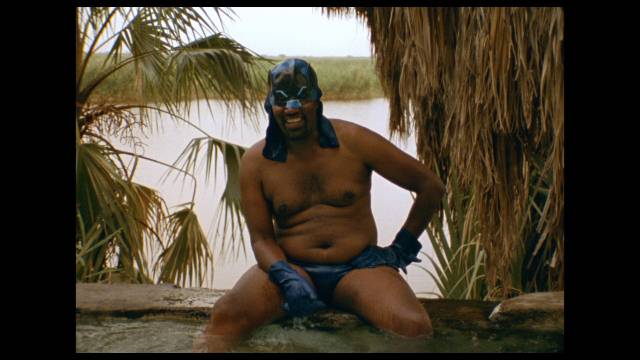
Although it might seem that performances are difficult to judge because of that patchwork quality, particularly in Jesus, and because many of the actors appear to have been dubbed by other performers, this actually reinforces the impression that we are seeing an amalgamation of disparate fragments gathered together and repurposed, something slightly reminiscent of Craig Baldwin’s paranoid fantasies pieced together from found-footage.
The Crumbs disk has only one brief supplement, short reminiscences from Llansó over several scenes (6:43). A similar, longer piece on the Jesus disk has Llanso responding to prompts from critic Josh Hurtado (25:50), in addition to a video essay by critic Will Webb (13:49) which delves into the influences on the film. Critics Alexandra Heller-Nicholas and Anton Bitel provide an enthusiastic if at times overly academic commentary. Two short films by Llansó – Chigger Ale (2013, 11:34) and Night in the Wild Garden (2015, 6:37) – reflect the themes and stylistic approach of the features. There are also trailers and a booklet containing critical essays about the two films.
Comments